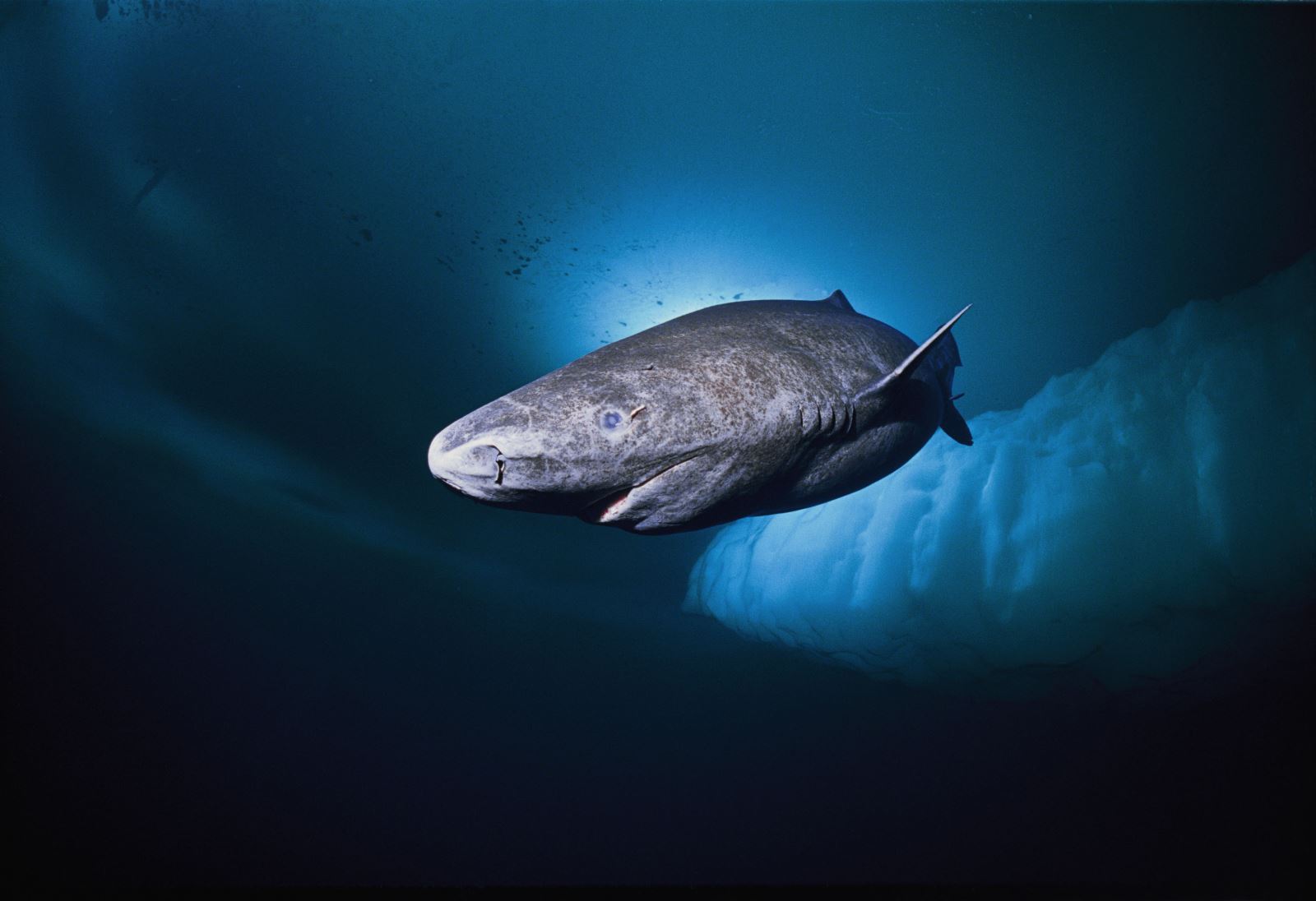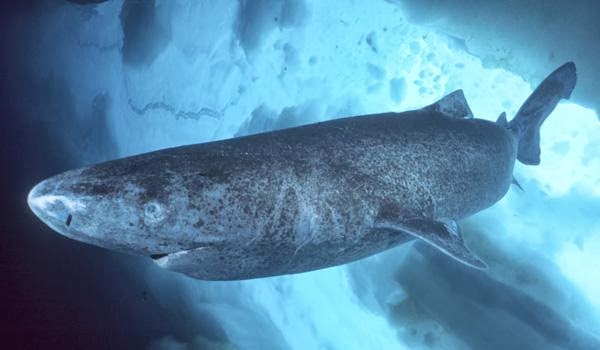
Greenland sharks are now the longest-living vertebrates known on Earth, scientists say.
Researchers used radiocarbon dating to determine the ages of 28 of the animals, and estimated that one female was about 400 years old.
The team found that the sharks grow at just 1cm a year, and reach sexual maturity at about the age of 150.
The research is published in the journal Science.
Lead author Julius Nielsen, a marine biologist from the University of Copenhagen, said: "We had our expectations that we were dealing with an unusual animal, but I think everyone doing this research was very surprised to learn the sharks were as old as they were."
The former vertebrate record-holder was a bowhead whale estimated to be 211 years old.
But if invertebrates are brought into the longevity competition, a 507-year-old clam called Ming holds the title of most aged animal.
Slow swimmers
Greenland sharks are huge beasts that can grow up to 5m in length.
They can be found, swimming slowly, throughout the cold, deep waters of the North Atlantic.
With this leisurely pace of life and sluggish growth rate, the sharks were thought to live for a long time. But until now, determining any ages was difficult.
For some fish, scientists are able to examine ear bones called otoliths, which when sectioned, show a pattern of concentric rings that scientists can count as they would the rings in a tree.
Sharks are harder, but some species, such as the Great White, have calcified tissue that grows in layers on their back bones, that can also be used to age the animals.
Conservation lessons
The team believes the animals only reach sexual maturity when they are 4m-long. And with this new, very lengthy age-range, it suggests this does not occur until the animals are about 150 years old.
The researchers say this has consequences for future conservation of the animals.
Because of their extreme longevity, Greenland sharks may still be recovering from being over-fished before WW2.
The sharks' livers were once used for machine oil, and they were killed in great numbers before a synthetic alternative was found and the demand fell.
"When you evaluate the size distribution all over the North Atlantic, it is quite rare that you see sexually mature females, and quite rare that you find new born pups or juveniles," Mr Nielsen explained.
"It seems most are sub-adults. That makes sense: if you have had this very high fishing pressure, all the old animals - they are not there anymore. And there are not that many to give birth to new ones.
"There is, though, still a very large amount of 'teenagers', but it will take another 100 years for them to become sexually active."
